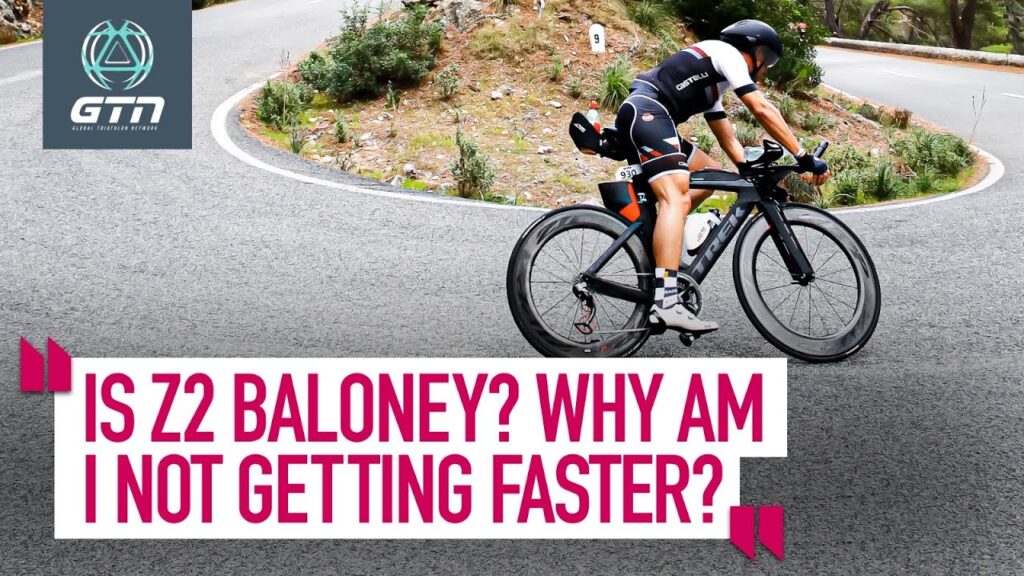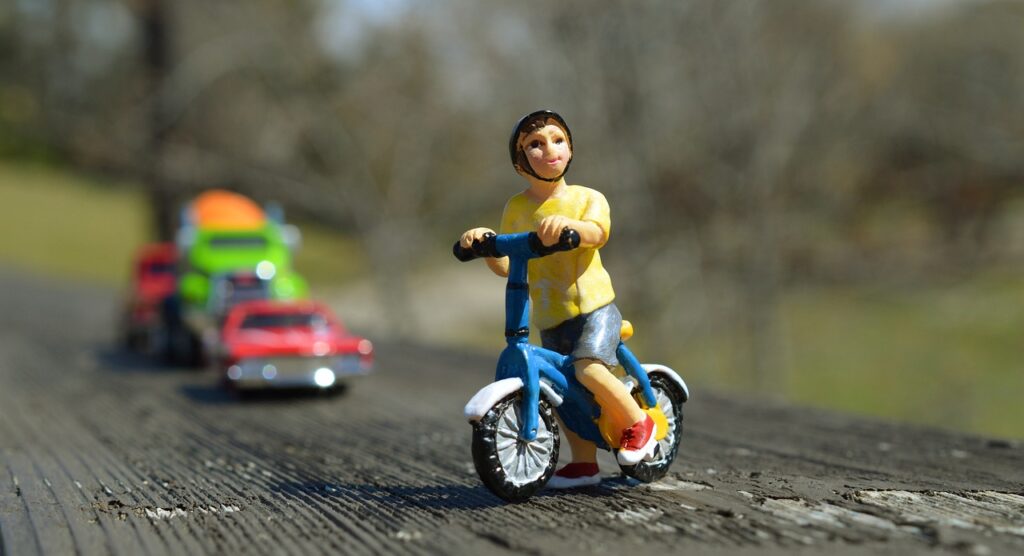You may not be getting faster at cycling due to improper training methods or lack of consistency in your workouts. Improving your cycling speed requires the right training approach and consistent practice.
By focusing on specific areas such as interval training, and strength training, and incorporating rest days into your routine, you can gradually increase your speed and endurance on the bike. Understanding the factors that may be holding you back, such as incorrect gearing, poor bike fit, or inadequate nutrition, will also aid in improving your performance.
Consistency, proper technique, and a well-rounded training plan are essential for becoming a faster cyclist.
Common Cycling Plateaus
Have you hit a wall in your cycling progress? It’s frustrating, right? Common cycling plateaus can hinder your speed gain. Let’s explore the reasons why you might not be getting faster.
Lack Of Consistent Training
Regular training is key to improvement. Missing sessions can stall progress. Create a consistent schedule.
Inadequate Recovery
Recovery is as crucial as training. Your muscles need time to rest and repair. Ensure you prioritize recovery.
Physical Factors
Cycling is a demanding sport that requires a combination of physical endurance, strength, and technique. If you have been wondering why you are not getting faster at cycling despite your efforts, it could be due to various physical factors. Understanding these factors can help you identify areas for improvement and potentially boost your cycling performance.
Muscle Imbalances
Muscle imbalances can hinder your cycling speed and overall performance. When certain muscles are stronger than others, it can lead to inefficient pedal strokes and decreased power output. Overdeveloped quadriceps and underdeveloped hamstrings, for example, can cause a lack of balance in force production during the pedal stroke. This imbalance can also lead to an increased risk of injury. Addressing muscle imbalances through targeted strength training and flexibility exercises can help improve your speed and endurance on the bike.
Poor Nutrition
Nutrition plays a crucial role in your cycling performance. Inadequate fueling before, during, and after rides can result in decreased energy levels, slower recovery, and compromised muscle function. A lack of essential nutrients such as carbohydrates, proteins, and electrolytes can negatively impact your ability to generate power and sustain high-intensity efforts.
Additionally, dehydration can lead to decreased blood volume and impaired thermoregulation, affecting your overall performance. Ensuring proper nutrition and hydration is essential in optimizing your body’s ability to handle the physical demands of cycling and improve your speed over time.
Psychological Factors
One reason you may not be improving your cycling speed could be psychological factors. Stress, lack of motivation, or mental fatigue can hinder performance. Understanding and addressing these aspects may help enhance your progress in cycling.
Lack Of Motivation
One of the main psychological factors that can contribute to your lack of progress in cycling is a lack of motivation. When you’re not motivated, it can be challenging to push yourself to train harder and improve your speed.
Several reasons can cause a lack of motivation in cycling:
- Monotony: Doing the same cycling route day after day can become monotonous, leading to boredom and decreased motivation. Consider diversifying your cycling routes to keep things fresh and exciting.
- Goallessness: Without a clear goal to work towards, you may feel aimless and lack the drive to push yourself. Set specific and achievable goals, whether it’s completing a certain distance or participating in a race, to rekindle your motivation.
- External Factors: Life’s demands, such as work and family responsibilities, can drain your energy and make it challenging to find the motivation to prioritize your cycling. Scheduling dedicated time for cycling and treating it as an essential part of your routine can help overcome this hurdle.
Mental Fatigue
Mental fatigue plays a significant role in your performance as a cyclist. When your mind is tired, it becomes harder to concentrate, maintain focus, and push through challenging training sessions.
Here are some factors that can contribute to mental fatigue:
- Overtraining: Constantly pushing yourself without allowing enough time for rest and recovery can lead to mental exhaustion. It’s important to find the right balance between training and rest to avoid mental burnout.
- Stress: High levels of stress in other areas of your life can spill over into your cycling performance, leaving you mentally drained. Implement stress-management techniques like meditation, deep breathing, or engaging in other relaxing activities to combat mental fatigue.
- Lack of Sleep: Inadequate sleep can impair cognitive function, leaving you feeling sluggish and mentally exhausted. Prioritize getting enough quality sleep to ensure your mind is sharp and ready for optimal performance.
By addressing these psychological factors, you can break through the barriers holding you back from getting faster at cycling. Remember, mental wellness is just as important as physical fitness when it comes to improving your speed and endurance.
Training Techniques
Struggling to increase your cycling speed? It may be time to rethink your training techniques. Incorporating interval training, strength exercises, and proper recovery into your routine could help you break through plateaus and achieve faster cycling times.
When it comes to improving your cycling speed, the right training techniques can make all the difference. However, if you’re wondering why you’re not getting faster at cycling, it’s possible that improper intensity and limited cross-training may be holding you back.
Improper Intensity
If you find yourself constantly pushing harder during your cycling workouts, thinking that more effort equals faster times, it’s time to reassess your approach. While intensity is important, it’s crucial to strike the right balance.
Too often, cyclists fall into the trap of going all-out every time they ride, without giving their bodies enough time to recover. This overexertion can lead to burnout and actually hinder overall progress. Instead, it’s important to incorporate a mix of low-moderate-, and high-intensity rides into your training regimen.
Low-intensity rides, such as endurance or recovery rides, help build your aerobic base and improve your body’s ability to utilize oxygen efficiently. On the other hand, high-intensity interval training (HIIT) sessions can help increase your speed and power.
By incorporating a variety of intensities into your training plan, you allow your body to adapt and improve gradually over time. It’s a long-term approach that will ultimately lead to better results.
Limited Cross-training
Cycling is a demanding sport that requires strength, endurance, and flexibility. While you may be putting in the hours on the bike, neglecting other areas of fitness can limit your progress.
One common mistake among cyclists is neglecting strength training. Building muscular strength and power can have a direct impact on your cycling performance. Stronger muscles not only help you generate more force with each pedal stroke but also enhance your overall stability and injury prevention.
In addition to strength training, incorporating cross-training activities such as swimming, running, or yoga can further improve your overall conditioning and prevent overuse injuries. These activities work for different muscle groups, providing a more well-rounded approach to fitness.
| Activity | Benefits |
|---|---|
| Swimming | Improves cardiovascular fitness and works upper body muscles |
| Running | Increases leg strength and endurance |
| Yoga | Enhances flexibility, core strength, and mental focus |
By diversifying your training routine, you not only build a stronger foundation but also reduce the risk of overuse injuries associated with repetitive motion. This, in turn, allows you to consistently train and make progress towards becoming a faster cyclist.
Equipment And Gear
When it comes to improving your cycling speed, one of the key factors to consider is the equipment and gear you are using. Inappropriate bike fit and outdated equipment can significantly hamper your progress and prevent you from getting faster. Let’s delve deeper into these two aspects and understand how they can impact your cycling performance.
Inappropriate Bike Fit
Having an improper bike fit can be a major obstacle in your quest to become a faster cyclist. When your bike is not adjusted to match your body’s unique measurements and individual biomechanics, it can lead to inefficient cycling mechanics. This means that the force you exert on the pedals may not be effectively transferred into forward motion, resulting in wasted energy and reduced speed.
Furthermore, an inappropriate bike fit can lead to discomfort and even injury. When your bike geometry is not optimized for your body, it can put excessive strain on your joints, muscles, and tendons, leading to pain and potential long-term damage. It’s crucial to ensure that your bike is properly fitted by an experienced professional who can take into account factors such as saddle height, handlebar position, and cleat alignment to maximize your efficiency and performance.
Outdated Equipment
Another factor that can hinder your progress in cycling is using outdated equipment. As technology continues to advance, cycling gear is constantly evolving, with new innovations aimed at improving speed, aerodynamics, and overall performance. If you are still using old and obsolete equipment, you may be missing out on significant gains in speed.
For example, outdated aerodynamic helmets may not provide the same level of wind resistance as the sleek and streamlined models available today. Similarly, older bike frames may not be as stiff or lightweight as the modern carbon fiber frames that can enhance your power transfer and responsiveness. Upgrading to newer, more advanced gear can give you the competitive edge you need to break through speed barriers.
Additionally, regular maintenance and proper upkeep of your equipment are essential for optimal performance. Neglecting to replace worn-out tires or using a chain that has lost its lubrication can lead to increased rolling resistance and decreased efficiency, inevitably impeding your progress toward becoming a faster cyclist.
In conclusion, paying attention to your equipment and gear is vital if you want to improve your cycling speed. Ensure that your bike fits you properly and is adjusted to match your body’s measurements and biomechanics. Consider upgrading to newer, more advanced equipment that can enhance your speed and performance. And don’t forget to maintain and regularly replace worn-out components to keep your bike in optimal condition. By investing in the right equipment and gear, you can pave the way for faster and more exhilarating rides.

Credit: www.youtube.com
Environmental Influences
When it comes to improving cycling speed, there are various factors that influence your progress. Environmental influences, including weather conditions and training terrain, play a crucial role in your cycling performance. Understanding how these factors affect your speed can help you make adjustments to your training and improve your overall performance.
Weather Conditions
The weather can have a significant impact on your cycling speed. Heavy wind or rain can create resistance, making it harder to maintain a fast pace. Extreme heat or cold can also affect your stamina and energy levels. It’s important to pay attention to the weather forecast and plan your rides accordingly to optimize your training sessions.
Training Terrain
The terrain you train on can impact your speed and overall cycling performance. Mountainous or hilly terrain can require more effort and may slow down your pace, whereas flat, smooth roads can allow you to maintain higher speeds. Varying your terrains can help you develop different cycling skills and build overall strength and endurance.
Seeking Professional Guidance
Seeking professional guidance is a pivotal step in improving your cycling performance. If you find yourself pondering why you’re not getting faster at cycling despite your efforts, seeking the expertise of a professional coach or sports scientist can provide valuable insights and direction for your training regimen.
Finding A Coach
If you’re serious about progressing as a cyclist, finding a qualified coach can make a substantial difference. A coach can offer personalized training plans, offer real-time feedback, and help you develop a strategic approach to reach your cycling goals. They can also provide guidance on essential factors such as nutrition, recovery methods, and race tactics. A coach’s expertise can elevate your performance and help you address any plateau in your progress.
Sports Science Analysis
Employing sports science analysis can provide invaluable data on your current fitness levels and areas for improvement. Functional threshold power (FTP) tests, lactate threshold assessments, and biomechanical analysis can uncover potential limitations and highlight opportunities for enhancing your speed and endurance. Utilizing scientific data can aid in designing a focused training program tailored to your specific strengths and weaknesses, ensuring more efficient progress in your cycling performance.
Setting Realistic Expectations
Setting realistic expectations is key when it comes to improving your speed in cycling. Understanding your own limits and adopting a long-term improvement mindset can help you progress steadily.
Understanding Personal Limits
Everyone has unique limits when it comes to physical performance. Embrace your current abilities without pushing too hard.
- Listen to your body cues – they indicate your limit is reached.
- Focus on incremental progress rather than immediate leaps.
- Acknowledge that improvement takes time and consistency.
Long-term Improvement Mindset
Shift your focus towards gradual, sustainable progress rather than quick fixes for lasting results.
- Develop a training plan that accounts for rest and recovery.
- Set achievable short-term goals leading to long-term growth.
- Embrace challenges as opportunities for learning and development.

Credit: www.bicycling.com
Frequently Asked Questions
Why Am I Getting Slower At Cycling?
There are several factors that can make you slower at cycling, including lack of training, fatigue, and poor nutrition. Monitoring your training, getting enough rest, and maintaining a balanced diet can help improve your cycling performance. Consulting with a professional coach or trainer is also beneficial.
How Can I Increase My Cycling Speed?
To increase cycling speed, focus on interval training, strength exercises, and proper bike fitting. Also, work on your pedaling technique and build endurance through consistent riding. Additionally, ensure you have the right gear ratio and maintain a balanced diet for optimal performance.
Why Does My Bicycle Not Go Fast?
A bicycle may not go fast due to low tire pressure, brake rubbing, improper gear selection, or a misaligned wheel.
How Can I Run Faster On My Cycle?
To run faster on your cycle, focus on these tips: 1. Improve your pedal technique by practicing smooth and efficient strokes. 2. Strengthen your leg muscles through targeted exercises like squats and lunges. 3. Increase your cardiovascular fitness with regular aerobic exercises.
4. Optimize your bike fit to ensure an ergonomic riding position. 5. Practice interval training to boost your speed and endurance.
Conclusion
Struggling with speed on your bike? Explore different training methods and optimize your nutrition. Consistency is key. Remember, progress takes time and patience. Keep pushing yourself, track your progress, and stay motivated. By making small adjustments, you can break through plateaus and achieve your cycling goals.



